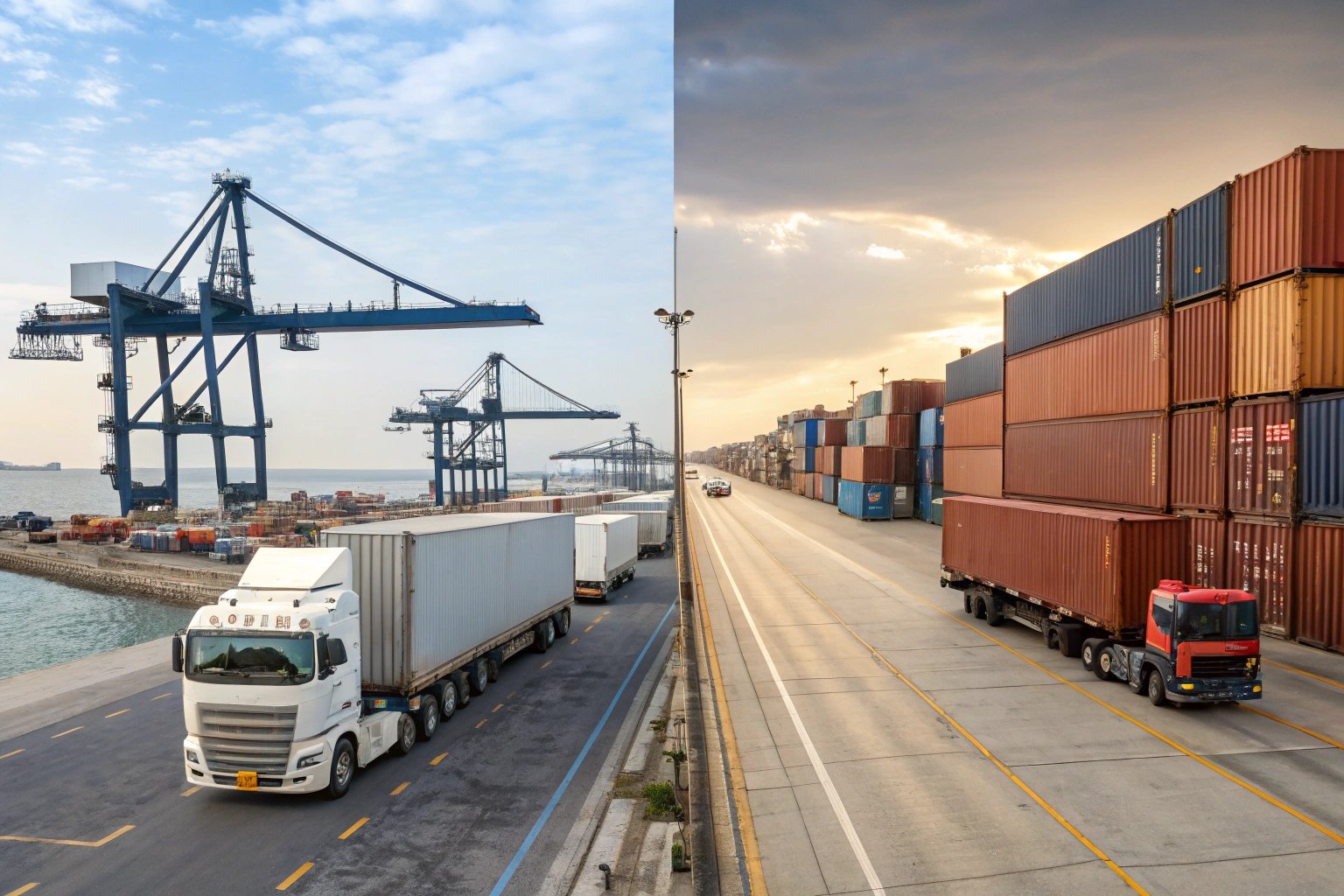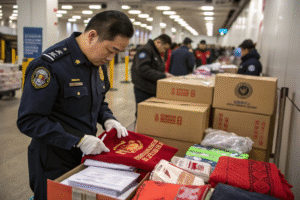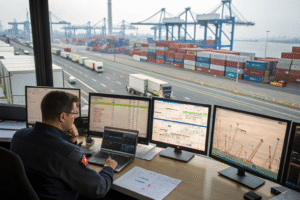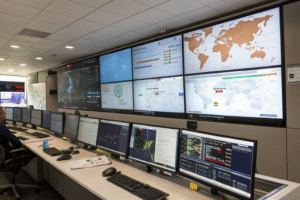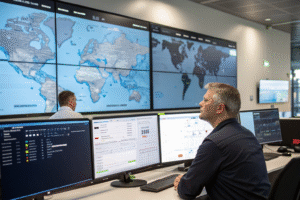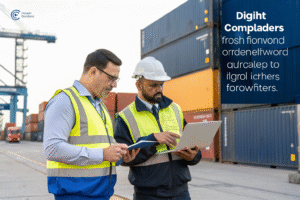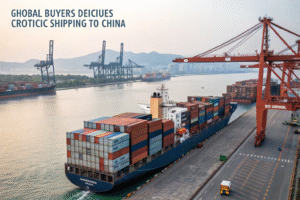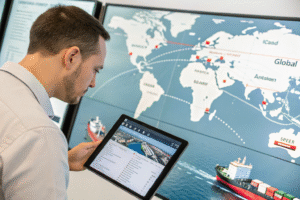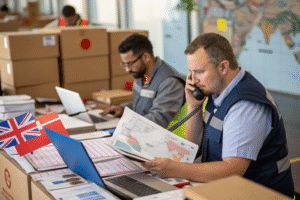Freight forwarding is only as efficient as the ports it depends on. One delay at the dock can derail an entire supply chain.
Ports play a central role in freight forwarding efficiency by influencing cargo flow, transit time, cost, and customs clearance speed. Choosing the right port and understanding its infrastructure can improve delivery performance dramatically.
As a freight forwarder, I’ve seen shipments succeed or fail depending on port choice and performance. Here’s how ports shape the outcome of global logistics.
How port congestion impacts delivery timelines
When ports are overwhelmed, everything slows down—unloading, customs, trucking, and delivery. It’s a ripple effect that costs money and time.
Port congestion causes shipment delays, missed sailing schedules, and inland delivery disruptions. Forwarders must monitor congestion levels and adjust routes proactively.
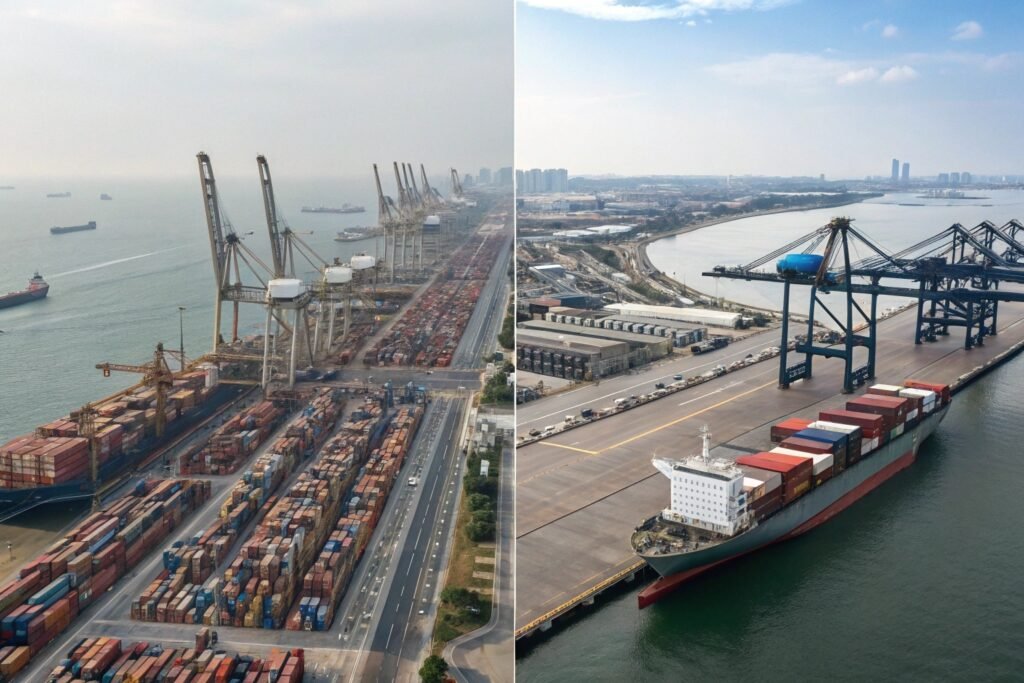
What causes port congestion in global trade?
Several factors can clog ports:
- Labor shortages or strikes
- Peak season volume spikes
- Customs or security slowdowns
- Weather events like typhoons
- Vessel bunching due to schedule changes
In 2021, a client shipping holiday goods to Los Angeles experienced a two-week delay due to port backlogs. We rerouted their next shipment to Oakland just in time to meet store deadlines.
| Congestion Cause | How It Affects Freight | Our Mitigation Plan |
|---|---|---|
| Overloaded terminals | Delayed unloading/loading | Use alternate ports nearby |
| Insufficient trucking | Long wait for inland transport | Book trucking slots ahead |
| Customs backlog | Extended clearance time | Pre-file documents digitally |
| Bad weather | Vessel delay or docking issues | Monitor forecasts, reroute if needed |
How do we monitor and react to port congestion?
At GeeseCargo, we use:
- Port congestion dashboards (e.g., MarineTraffic)
- Port throughput stats
- Carrier advisories
- Real-time updates from local port agents
We don’t wait for delays—we plan around them.
Choosing the right port to reduce transit costs
Not all ports are equal. The port you choose can add or subtract days and dollars from your supply chain.
Choosing the right port reduces inland trucking costs, transit time, and storage fees. A smart freight forwarder evaluates origin and destination port options based on your cargo and timeline.
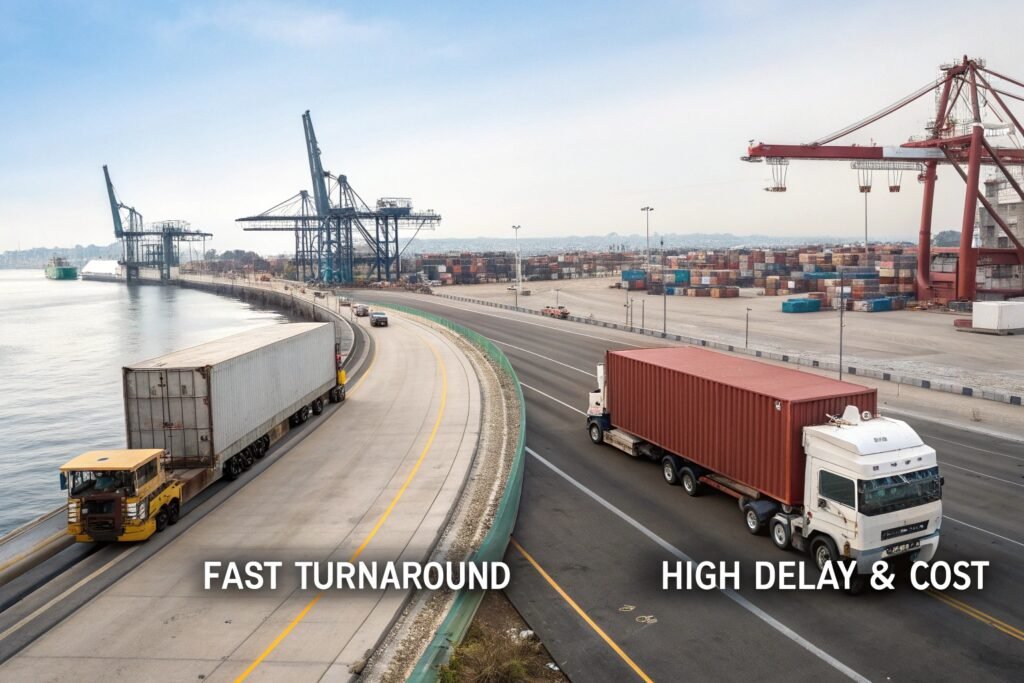
What makes one port better than another?
Some ports offer:
- Lower terminal handling charges (THC)
- Shorter customs release times
- Closer proximity to final destination
- Better rail and truck connectivity
Let’s say you’re shipping from Shenzhen to Chicago. Instead of defaulting to Los Angeles, we might route through Vancouver + rail—cutting inland cost by 15% and shaving 2 days off transit.
| Port Selection Factor | Resulting Benefit |
|---|---|
| Proximity to destination | Shorter trucking time and lower fees |
| Customs performance | Faster cargo clearance |
| Port handling speed | Quicker loading/unloading |
| Connection options | Better rail/road access |
How do we help clients select the right port?
We analyze:
- Freight rate per route
- Inland delivery cost from each port
- Port reliability data
- Delivery deadline requirements
It’s not about the “closest” port—it’s about the smartest one.
Port infrastructure and its effect on cargo flow
A port’s physical layout, equipment, and staff capacity directly impact how quickly containers move in and out.
Well-developed port infrastructure improves cargo flow, shortens ship dwell time, and enables quicker handoffs between ocean, customs, and trucking.
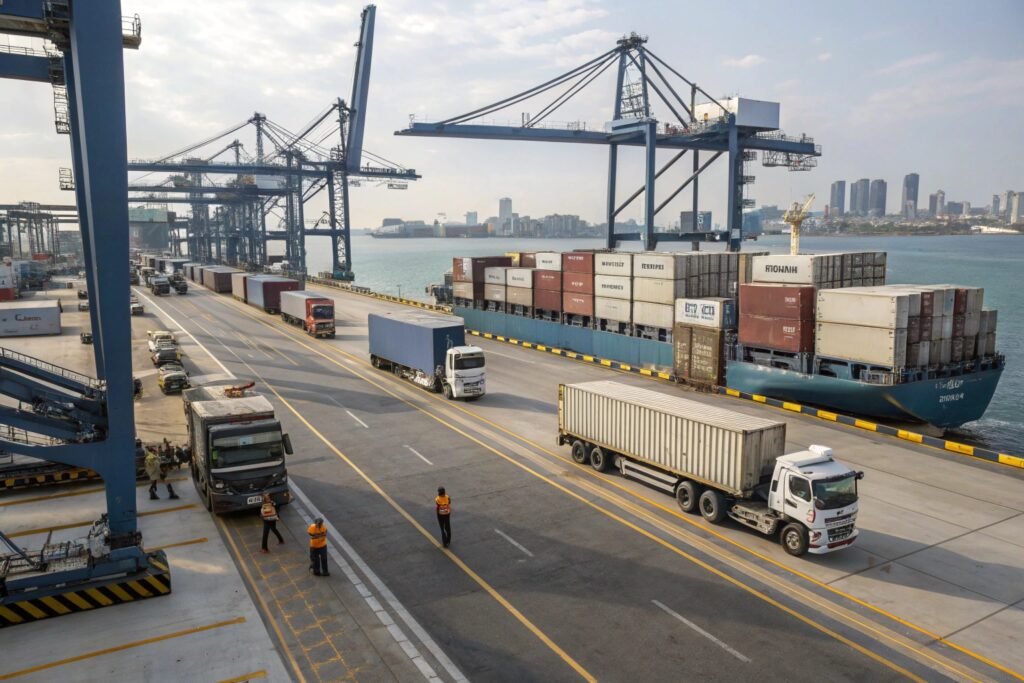
What infrastructure elements affect port efficiency?
- Cranes and container handling gear: The more modern and automated, the faster the turn.
- Yard space: Determines how many containers can be stored or moved at once.
- Rail and road links: Enable direct inland shipment without excessive handoffs.
- Warehouse zones: Allow for cross-docking and immediate distribution.
I once visited Ningbo Port and was amazed by the crane coordination—containers unloaded in under 2 minutes. Compare that to older ports where ships idle for hours.
| Infrastructure Type | Cargo Flow Advantage |
|---|---|
| Automated cranes | Faster loading/unloading |
| Digitized yard management | Real-time container location |
| On-site customs facility | Quicker inspections and clearance |
| Dedicated trucking lanes | Smooth inbound/outbound truck flow |
Why does infrastructure matter to freight forwarders?
We plan delivery schedules based on:
- Port turnaround time (vessel dwell)
- Container availability (for pickup)
- Truck entry/exit throughput
Ports with strong infrastructure help us meet client deadlines reliably.
Role of digital port systems in faster processing
The digital revolution is changing ports. Paper forms and long queues are being replaced with online platforms and integrated systems.
Digital port systems improve efficiency by enabling pre-clearance, live scheduling, real-time updates, and faster customs processing.
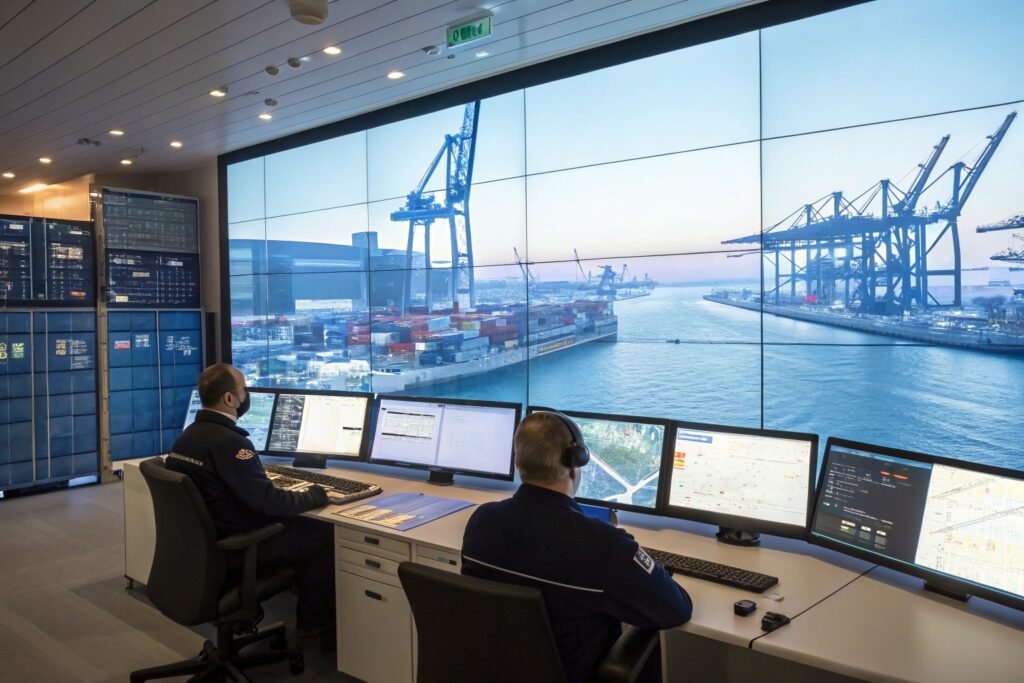
How do digital ports streamline the freight process?
Modern ports now use:
- EDI (Electronic Data Interchange): Syncs shipping instructions, B/L data, and customs declarations.
- Port community systems (PCS): Central platforms for forwarders, carriers, terminals, and authorities to share information.
- Smart container tracking: GPS + RFID tools to locate cargo instantly.
- E-gate access: Reduces truck wait time at terminals.
At GeeseCargo, we connect directly to port digital systems in China, Singapore, and the U.S. That means faster customs filing, appointment booking, and document retrieval.
| Digital Feature | Time Saved | How We Use It |
|---|---|---|
| Pre-clearance platform | 24–48 hours on customs release | Submit docs before cargo arrives |
| Online trucking slot | 2–4 hours on pickup delays | Schedule delivery automatically |
| B/L auto-verification | Manual check removed | Avoids mismatch and delays |
| Status dashboard | Fewer calls/emails | Client sees progress live |
What’s the future of port digitalization?
Ports are moving toward full automation:
- AI-based crane control
- Paperless customs via blockchain
- 24/7 terminal ops without manual input
As ports evolve, freight forwarders like us evolve with them—bringing our clients faster, more predictable supply chains.
Conclusion
Ports are the heartbeat of global freight—and their performance defines your logistics success. At GeeseCargo, we choose smart ports, plan around bottlenecks, and tap into digital systems to keep your cargo moving fast and smooth.
